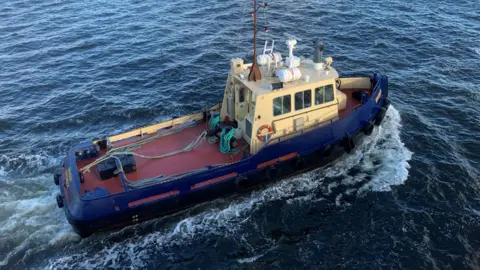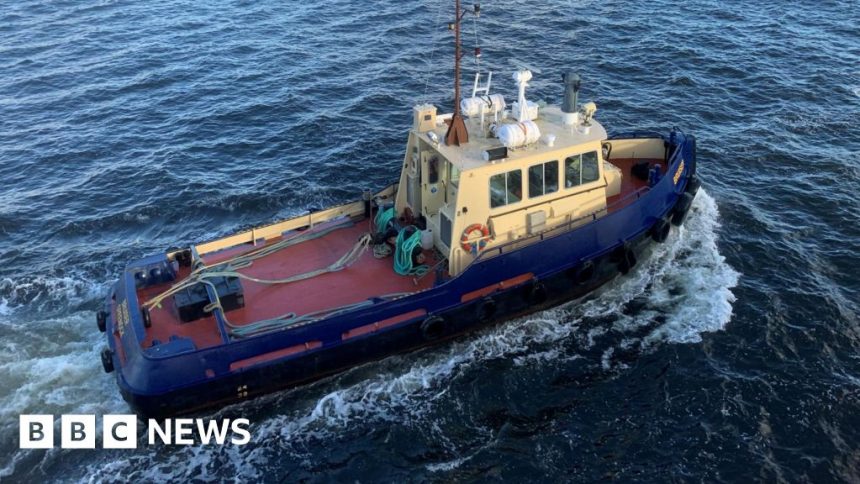Safety breakdown led to Greenock tug crew deaths
 MAIB
MAIBThe deaths of two men when a tugboat capsized on the Clyde near Greenock was caused by a “breakdown” in safety procedures, an accident report has found.
George Taft, 65, and Ian Catterson, 73, drowned in February last year when MV Biter capsized while assisting the Hebridean Princess cruise ship.
The Marine Accident Investigation Branch (MAIB) said that the speed of the ship almost certainly caused an “essential” safety rope to break.
Fourteen safety issues directly contributed to the accident, including there being “no shared understanding” of a plan between the two boats.
Andrew Moll, the chief inspector of Marine Accidents, said it was a “cruel lesson of how rapidly things can go dreadfully wrong”.
He said: “In less than 10 seconds the tug capsized, and two experienced seafarers lost their lives, because of a breakdown of the systems that should have kept them safe.”
Clyde Marine Services, the tug’s owner, has been ordered to review its safety management system and risk assessments, and adopt a recognised training scheme for tug masters.
Port operator Clydeport has also been asked to commission an independent review of the training provided to its ship pilots.
 Christopher Brindle
Christopher BrindleThe MAIB report said MV Biter and another tug had been assisting Hebridean Princess at Custom House Quay when it was asked to operate behind the ship.
It found that when MV Biter began to manoeuvre behind the Hebridean Princess the ship’s speed exceeded industry guidelines.
The load on the tug’s towlines was also between two and five times more than Clydeport’s recommended speed range.
This caused a “significant load” to be transferred which was “almost certainly” a factor in the capsizing.
The MAIB also found an open hatch “compromised” the tug’s watertight integrity and limited the crew’s chance of survival.
Mr Moll added: “Small conventional tugs remain an essential part of UK port operations.
“However, the vulnerabilities of these vessels must be understood by those that operate and control them.
“Harbour authorities, ship and tug masters, and pilots should collectively own this risk.”
 Police Scotland
Police ScotlandThe MAIB said the speed of Hebridean Princess placed excessive load on the MV Biter’s gob rope – which secures the towline to prevent capsizing – and caused this to break.
The report also highlighted that the cruise ship’s master and tug masters did not have a “shared understanding” of the plan of the Clydeport pilot, who was controlling Hebridean Princess at the time.
It was unclear whether anyone understood that there were “extreme risks” associated with MV Biter’s manoeuvre behind the cruise ship.
It found the pilot had not worked with tugs like Biter before and “did not understand” what the tug would be doing on the manoeuvre.
Failure to discuss the plan meant that no-one challenged his intentions.
The sinking sparked a major search operation for Mr Taft, from Greenock, and Mr Catterson, 73, from Millport, on 24 February last year.
Their bodies were recovered in the Clyde a day after the incident.
Clyde Marine Services said it would take time to “review and consider” the MAIB report.
A spokesperson said: “Our thoughts remain with the families affected and Clyde Marine Services will continue to cooperate fully with ongoing official investigations.”
Clydeport has been approached for comment.







